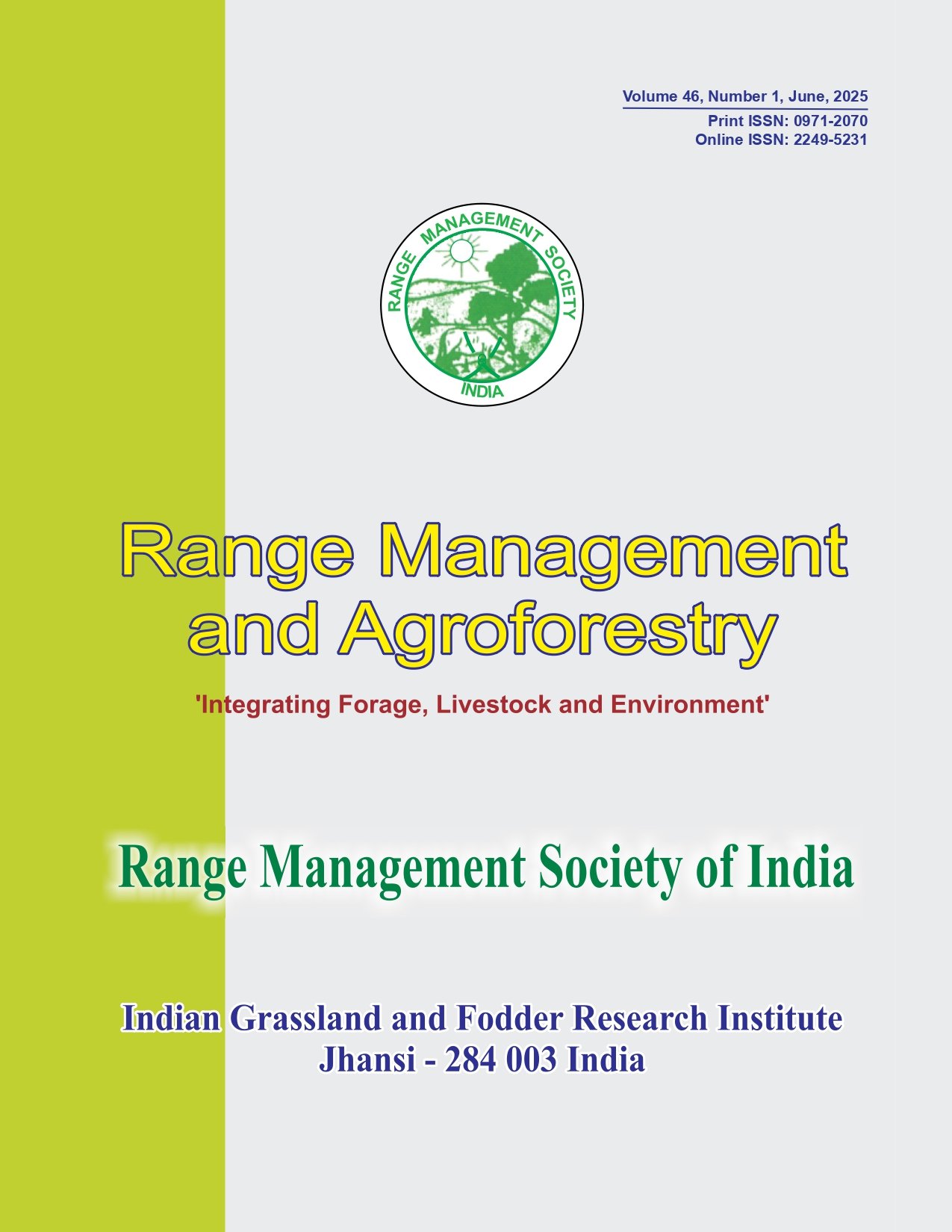Soil physico-chemical and biological properties as affected by vegetation systems and elevation in western Himalayas
Keywords:
Agroforestry, Grassland, Microbial count, Silvipasture, Soil propertiesAbstract
Assessment of various soil properties is vital for understanding and predicting long term effects of changes in land use and climate. A total of 414 composite soil samples (0-30 cm) were collected from different vegetation systems i.e. agriculture based agroforestry system (ABAF), chir pine silvipasture (SPCP), mixed-trees silvipasture (SPM), ban oak silvipasture (SPBO) and grassland (Gr) at different elevations (500-1850 m) in Solan district, Himachal Pradesh, India for examining various soil properties. All the tested soil parameters varied significantly (P<0.005) among the vegetation-systems and they increased along the elevation except for pH, EC and bulk density. Maximum organic carbon, moisture content, bacterial, fungal and actinomycetes count (2.10%, 19.43%, 104.28 x 106 cfug-1, 63.59 x 103 cfug-1 and 65.07 x 104 cfug-1, respectively) were recorded in SPBO and minimum in grassland (1.68%, 8.03%, 38.52 x 106 cfug-1, 24.69 x 103 cfug-1, 19.51 x 103 cfug-1, respectively). While maximum pH (6.95), EC (0.107 dSm-1) and bulk density (1.37 gcm-3) were recorded in ABAF, SPM and grassland system, respectively and their respective lowest values were recorded in SPBO, grassland, ABAF as 6.30, 0.094 dSm-1 and 1.14 gcm-3. Thus the tree-based systems revealed better soil properties compared to grassland in all the elevation zones.




